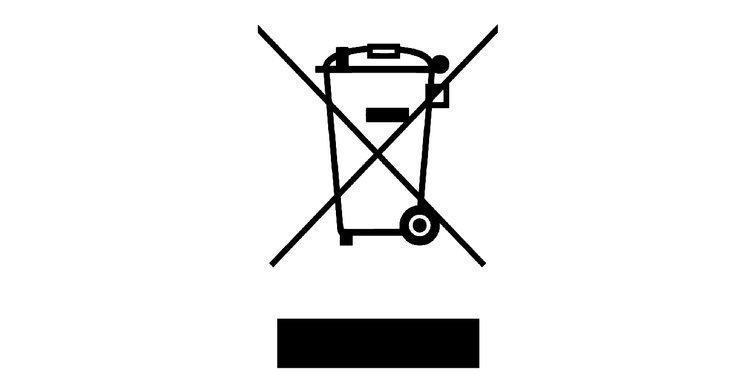MoTeC's unique M1 technology redefines the meaning of customisation, delivering total control without compromise, while highly advanced security strategies make these ECUs ideal for both category managed and unrestricted applications.
The

MoTeC's unique M1 technology redefines the meaning of customisation, delivering total control without compromise, while highly advanced security strategies make these ECUs ideal for both category managed and unrestricted applications.
The
At the time of purchase, an
An M1 Package is the file that is loaded into an
GP Packages
MoTeC offers a suite of General Purpose Packages that allow an M1 ECU to be tuned to any number of applications. The flexibility of these GP Packages enables a tuner to configure the same ECU to very different engine setups, including those with road vehicle systems to maintain, such as air conditioning.
GP Packages are available in variants such as Advanced, Race, Paddle shift and Direct Injection.
Targeted Packages
These are Packages specifically developed in-house by MoTeC engineers for a particular engine or vehicle. In some cases this includes integration with vehicle control systems beyond the engine, for example, stability control and cruise control.
For some targeted applications, the
These are Packages developed by a MoTeC Partner Developer. It may be based on a Public Package with unique features added by the developer to offer a specific solution.
MoTeC support staff will not provide assistance for these Packages, it will be provided by the Partner.
These are Packages developed in-house by MoTeC engineers written specifically for the category, limiting the functionality to the class requirements.
When an
The M1's advanced security system is based on public-key cryptography - the cornerstone of secure internet transactions - so it is virtually impossible to change the ECU function without authorised permission. Security is enforced by the ECU and protected by a microprocessor with integrated measures to prevent tampering.
A password feature grants different levels of access for different users, e.g. an engine tuner, a drive train tuner and a data analysis engineer. This is also suitable for Control ECU applications. Scrutineering teams can be given access to extra information and are able to lock down selected parts of the ECU, while other team members can be granted access to selected tuning parameters.
There are three Logging Licence levels. The level determines the number of channels and sample rates available. Logging Level 1 Licence is diagnostic logging, which comes standard with the product, and includes a fixed log set and sample rates.
Logging Level 3 Licence: includes 8 log sets, up to 2000 channels (including Level 1 diagnostics logging) and a maximum 1000 Hz sample rate.
The Pro Analysis upgrade is the professional version of MoTeC's i2 data analysis software and provides advanced mathematics, multiple overlay laps, and unlimited components, workbooks and worksheets.
User communication with the ECU requires an Ethernet connection. A cable providing an Ethernet plug and suitable pin termination for the M1 mating connector can be purchased from MoTeC Dealers.
Voltage range: -30 V to 35 V
Maximum current on outputs:
Battery
Depending on the current draw for some outputs, a minimum wire gauge is recommended for safe operation:
| Pin Number | Designation | Full Name | OE Pin | Function | Description |
|---|---|---|---|---|---|
| A01 | INJ_D1A_POS | Direct Injector 1A + | |||
| A02 | INJ_D2A_POS | Direct Injector 2A + | |||
| A03 | INJ_D2B_POS | Direct Injector 2B + | |||
| A04 | INJ_D4A_POS | Direct Injector 4A + | |||
| A05 | INJ_D1B_POS | Direct Injector 1B + | |||
| A06 | LA_NB2 | Lambda Narrow Input 2 | |||
| A07 | LA_NB1 | Lambda Narrow Input 1 | |||
| A08 | SEN_5V0_C1 | Sensor 5.0V C | |||
| A09 | SEN_5V0_C2 | Sensor 5.0V C | |||
| A10 | INJ_D4B_POS | Direct Injector 4B + | |||
| A11 | INJ_D1A_NEG | Direct Injector 1A - | |||
| A12 | INJ_D1B_NEG | Direct Injector 1B - | |||
| A13 | AV11 | Analogue Voltage Input 11 | |||
| A14 | DIG2 | Digital Input 2 | |||
| A15 | RS232_RX | RS232 Receive | |||
| A16 | SEN_5V0_C3 | Sensor 5.0V C | |||
| A17 | INJ_D6A_POS | Direct Injector 6A + | |||
| A18 | SEN_0V_C1 | Sensor 0V C | |||
| A19 | SEN_0V_C2 | Sensor 0V C | |||
| A20 | SEN_0V_C3 | Sensor 0V C | |||
| A21 | DIG1 | Digital Input 1 | |||
| A22 | LIN | LIN Bus | |||
| A23 | RS232_TX | RS232 Transmit | |||
| A24 | CAN2_HI | CAN Bus 2 High | |||
| A25 | INJ_D6B_POS | Direct Injector 6B + | |||
| A26 | INJ_D2A_NEG | Direct Injector 2A - | |||
| A27 | AV15 | Analogue Voltage Input 15 | |||
| A28 | AV16 | Analogue Voltage Input 16 | |||
| A29 | AV17 | Analogue Voltage Input 17 | |||
| A30 | DIG3 | Digital Input 3 | |||
| A31 | CAN2_LO | CAN Bus 2 Low | |||
| A32 | INJ_D3A_POS | Direct Injector 3A + | |||
| A33 | INJ_D2B_NEG | Direct Injector 2B - | |||
| A34 | AV13 | Analogue Voltage Input 13 | |||
| A35 | AV12 | Analogue Voltage Input 12 | |||
| A36 | INJ_D6A_NEG | Direct Injector 6A - | |||
| A37 | DIG4 | Digital Input 4 | |||
| A38 | BAT_BAK | Battery Backup | |||
| A39 | CAN3_HI | CAN Bus 3 High | |||
| A40 | INJ_D3B_POS | Direct Injector 3B + | |||
| A41 | AV14 | Analogue Voltage Input 14 | |||
| A42 | INJ_D3A_NEG | Direct Injector 3A - | |||
| A43 | INJ_D4A_NEG | Direct Injector 4A - | |||
| A44 | INJ_D5B_NEG | Direct Injector 5B - | |||
| A45 | INJ_D6B_NEG | Direct Injector 6B - | |||
| A46 | CAN3_LO | CAN Bus 3 Low | |||
| A47 | INJ_D5A_POS | Direct Injector 5A + | |||
| A48 | INJ_D5B_POS | Direct Injector 5B + | |||
| A49 | INJ_D3B_NEG | Direct Injector 3B - | |||
| A50 | INJ_D4B_NEG | Direct Injector 4B - | |||
| A51 | INJ_D5A_NEG | Direct Injector 5A - | |||
| A52 | IGN_LS12 | Low Side Ignition 12 | |||
| A53 | IGN_LS9 | Low Side Ignition 9 | |||
| A54 | IGN_LS10 | Low Side Ignition 10 | |||
| A55 | IGN_LS11 | Low Side Ignition 11 |
| Pin Number | Designation | Full Name | OE Pin | Function | Description |
|---|---|---|---|---|---|
| B_A | OUT_HB1 | Half Bridge Output 1 | |||
| B_B | OUT_HB2 | Half Bridge Output 2 | |||
| B_C | OUT_HB3 | Half Bridge Output 3 | |||
| B_D | OUT_HB4 | Half Bridge Output 4 | |||
| B_E | OUT_HB5 | Half Bridge Output 5 | |||
| B_F | OUT_HB6 | Half Bridge Output 6 | |||
| B_G | BAT_NEG1 | Battery Negative | |||
| B_H | BAT_POS1 | Battery Positive | |||
| B_J | BAT_POS2 | Battery Positive | |||
| B_K | BAT_POS3 | Battery Positive | |||
| B_L | BAT_POS4 | Battery Positive | |||
| B_M | OUT_HB10 | Half Bridge Output 10 | |||
| B_N | OUT_HB9 | Half Bridge Output 9 | |||
| B_P | OUT_HB8 | Half Bridge Output 8 | |||
| B_R | OUT_HB7 | Half Bridge Output 7 | |||
| B_S | INJ_LS4 | Low Side Injector 4 | |||
| B_T | INJ_LS6 | Low Side Injector 6 | |||
| B_U | INJ_LS1 | Low Side Injector 1 | |||
| B_V | INJ_LS2 | Low Side Injector 2 | |||
| B_W | BAT_NEG2 | Battery Negative | |||
| B_X | BAT_NEG3 | Battery Negative | |||
| B_Y | BAT_NEG4 | Battery Negative | |||
| B_Z | BAT_NEG5 | Battery Negative | |||
| B_a | INJ_LS5 | Low Side Injector 5 | |||
| B_b | INJ_LS3 | Low Side Injector 3 | |||
| B_c | BAT_NEG6 | Battery Negative |
| Pin Number | Designation | Full Name | OE Pin | Function | Description |
|---|---|---|---|---|---|
| C01 | IGN_LS4 | Low Side Ignition 4 | |||
| C02 | IGN_LS3 | Low Side Ignition 3 | |||
| C03 | IGN_LS8 | Low Side Ignition 8 | |||
| C04 | IGN_LS6 | Low Side Ignition 6 | |||
| C05 | IGN_LS5 | Low Side Ignition 5 | |||
| C06 | AV8 | Analogue Voltage Input 8 | |||
| C07 | AV10 | Analogue Voltage Input 10 | |||
| C08 | IGN_LS2 | Low Side Ignition 2 | |||
| C09 | IGN_LS7 | Low Side Ignition 7 | |||
| C10 | UDIG8 | Universal Digital Input 8 | |||
| C11 | AV6 | Analogue Voltage Input 6 | |||
| C12 | AV7 | Analogue Voltage Input 7 | |||
| C13 | AV9 | Analogue Voltage Input 9 | |||
| C14 | SEN_0V_A1 | Sensor 0V A | |||
| C15 | SEN_0V_A2 | Sensor 0V A | |||
| C16 | IGN_LS1 | Low Side Ignition 1 | |||
| C17 | UDIG7 | Universal Digital Input 7 | |||
| C18 | UDIG1 | Universal Digital Input 1 | |||
| C19 | UDIG12 | Universal Digital Input 12 | |||
| C20 | UDIG11 | Universal Digital Input 11 | |||
| C21 | UDIG10 | Universal Digital Input 10 | |||
| C22 | UDIG9 | Universal Digital Input 9 | |||
| C23 | SEN_0V_B1 | Sensor 0V B | |||
| C24 | CAN1_HI | CAN Bus 1 High | |||
| C25 | UDIG3 | Universal Digital Input 3 | |||
| C26 | ETH_RX- | Ethernet Receive- | Ethernet Orange | ||
| C27 | UDIG4 | Universal Digital Input 4 | |||
| C28 | AV4 | Analogue Voltage Input 4 | |||
| C29 | AV5 | Analogue Voltage Input 5 | |||
| C30 | SEN_0V_B2 | Sensor 0V B | |||
| C31 | CAN1_LO | CAN Bus 1 Low | |||
| C32 | UDIG2 | Universal Digital Input 2 | |||
| C33 | ETH_RX+ | Ethernet Receive+ | Ethernet Orange/White | ||
| C34 | ETH_TX- | Ethernet Transmit- | Ethernet Green | ||
| C35 | AV3 | Analogue Voltage Input 3 | |||
| C36 | AV2 | Analogue Voltage Input 2 | |||
| C37 | AT1 | Analogue Temperature Input 1 | 1k Pull up to SEN_5V_A | ||
| C38 | AT3 | Analogue Temperature Input 3 | 1k Pull up to SEN_5V_B | ||
| C39 | AT2 | Analogue Temperature Input 2 | 1k Pull up to SEN_5V_A | ||
| C40 | UDIG5 | Universal Digital Input 5 | |||
| C41 | ETH_TX+ | Ethernet Transmit+ | Ethernet Green/White | ||
| C42 | AV1 | Analogue Voltage Input 1 | |||
| C43 | KNOCK3 | Knock Input 3 | |||
| C44 | KNOCK2 | Knock Input 2 | |||
| C45 | AT5 | Analogue Temperature Input 5 | 1k Pull up to SEN_5V_C | ||
| C46 | AT4 | Analogue Temperature Input 4 | 1k Pull up to SEN_5V_B | ||
| C47 | UDIG6 | Universal Digital Input 6 | |||
| C48 | SEN_5V0_A1 | Sensor 5.0V A | |||
| C49 | KNOCK4 | Knock Input 4 | |||
| C50 | SEN_5V0_B1 | Sensor 5.0V B | |||
| C51 | KNOCK1 | Knock Input 1 | |||
| C52 | AT6 | Analogue Temperature Input 6 | 1k Pull up to SEN_5V_C | ||
| C53 | SEN_5V0_A2 | Sensor 5.0V A | |||
| C54 | SEN_6V3 | Sensor 6.3V | |||
| C55 | SEN_5V0_B2 | Sensor 5.0V B |
M1 ECUs are designed for use in a vehicle. As such, this product complies with the following standard:
This product is designed for an internal operating temperature range of -40 °C to 85 °C.
It should be installed in a location with sufficient air circulation and be shielded against thermal emissions from surrounding components.
This product is designed to withstand vibrations typical for normal vehicle installations.
It should not be exposed to severe and lasting vibrations. For example, the product should not be installed in solid connection to vibrating components like engines or undamped vehicle structures.
Do not attempt to open and/or repair the device.
For repairs, contact and return the product via your local Authorised MoTeC Dealer.



This product should be disposed of in accordance with relevant national regulations for disposal of electronic waste. It does not contain hazardous materials which might be subject to specific materials regulations.
MoTeC Pty. Ltd.
If you are interested in purchasing this product contact an Authorised MoTeC Dealer.
This page shows the relevant downloads for this product. For a full selection of MoTeCs downloads visit the Downloads page.
To keep up-to-date with the latest webinars or software you can subscribe to our mailing lists and we will send you a message when new items are released.
To sign-up for a mailing list click the "SIGN-UP: WEBINAR NEWS" or "SIGN-UP: SOFTWARE RELEASE" button below.
